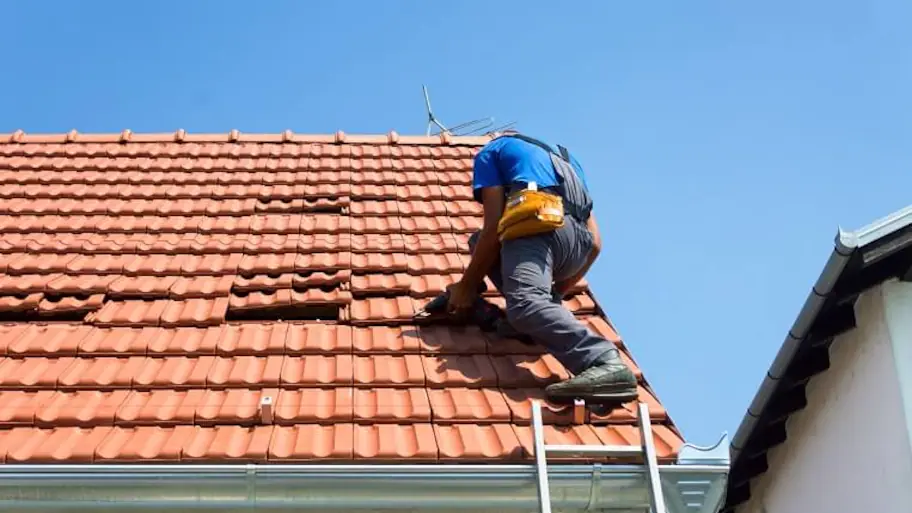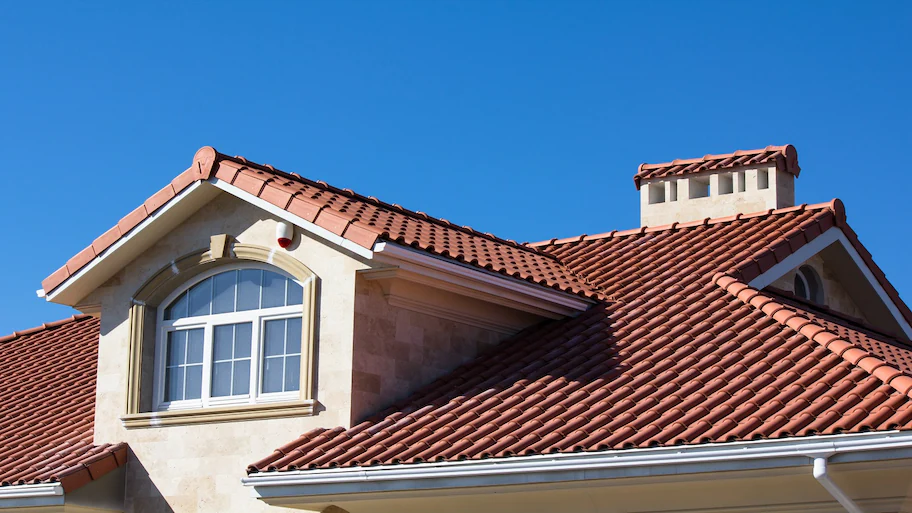
Roof trusses are the literal backbone of your roofing system, and replacing one can get costly. Use this roof truss cost guide to set your budget properly.
For securing roof shingles, you’ll “nail it” if you choose roofing nails over staples


Roofing staples are useful for securing the felt paper underlayment of your roofing.
Staple guns are less bulky and easier to control than most nail guns.
When it comes to securing shingles, roofing nails offer more holding power and meet building codes.
While pricing between the two is comparable, roofing nails offer more durability, longer length of life, and less maintenance needs.
If a few of your shingles blew off in a storm or it’s time to replace your roof, it’s critical that you choose the right fasteners for the job. Roofing nails are highly preferred to staples for asphalt and other types of roofs because they offer more holding power, meet building codes, and are easier to install correctly.
Before you jump into your next roofing project, learn about the local building codes in your area to ensure that you’ll meet code requirements. Talk with your local roofing contractor about what they use to ensure your investment will pay off. Now, let’s look at the pros and cons of roofing staples and nails to determine what’s right for your roof.
The main difference between roofing staples and nails is that staples are typically used for felt underlayment, while nails are used for shingles. Staples are lighter and easier to maneuver on roofs, while nail guns are heavier. However, different roofing nails last decades and can withstand severe wind, while staples may not hold in severe weather.
You should use roofing staples to secure the felt paper underlayment of your roofing. But they don’t provide enough holding power for asphalt shingles. In fact, roof shingles secured by staples rarely meet building codes. Here are the pluses and minuses of roof staples.
| Pros | Cons |
|---|---|
| Staple guns are lighter than nail guns | Rarely meet building codes |
| Staples are light and small | Requires more skill to properly install |
| Works well for felt paper underlayment | More likely to rip off during storms |
Best for: Homes that don’t get a lot of storms
It’s easy to maneuver a roofing staple gun, as they tend to be less bulky and easier to control than most roofing nail guns. Staples also work well for underlayments, such as roofing tar paper—they get the job done with precision and durability.
Another perk of staples is that they’re less prone to jamming, which means you can complete the project quickly. They’re also effortless to carry lots of staples— your local roof repair specialist may even have several sticks of staples in their pocket to easily reload their staple gun.
Finally, staples are inexpensive, costing anywhere from $0.01 to $0.03 per staple.
A drawback of staples is that they require more skill and attention. Poor staple placement on a shingle compromises the roof’s integrity. Staples need more detail and skill to place upright into a shingle.
Staples also don’t don’t maintain strength and durability when securing shingles, especially in areas with high winds. Staples are more likely to blow off or become loose. In many areas, stapling roof shingles does not meet code regulations, meaning your roof repair or replacement would not pass inspection.
Another con is that staples are often improperly installed. It’s hard to hold a roofing staple gun perpendicular to the shingle. That kind of inaccuracy can lead to the staple going in at an odd angle that does not secure the shingle well.
Finally, they’re easy to over-drive and underdrive. An over-driven staple can dig into the shingle or crack it in cold weather. An under-driven staple won’t offer holding power.

Roofing nails are durable and hold shingles in place for decades, even in inclement weather and high winds. Nails are the standard for securing roofing shingles and meet nearly all building codes. Here’s what to know about the advantages and disadvantages of roofing nails for asphalt shingles.
| Pros | Cons |
|---|---|
| Meets building codes | Nail guns are heavier |
| Easier to install | Nail guns jam more often |
| Lasts for decades | Improper installation can lead to water leaks |
Best for: Homes with high winds and frequent storms
Using roof nails for shingles is the industry gold standard for roofing, as nails often hold up well for decades. Thanks to the round head of the nail, it’s easier to ensure the right depth. Even if the nail gun isn't perfectly perpendicular, the nail will offer great stability to the shingle.
Also, galvanized, coated, or stainless steel nails meet building codes in almost all areas. Experts recommend a minimum 12-gauge shank, along with a head diameter of at least 3/8 of an inch. Depending on your home’s location, copper or aluminum roofing nails might also meet code and pass inspections.
Nail guns can be tiresome to hold and reload because it is bulkier than a staple gun. Plus, reloading the gun takes time, and it can be difficult for a roofer to carry extra nail coils with them.
Finally, nail guns can jam. If someone drops a coil of nails, the coil might deform and lead to jamming.
Here are the differences between roofing staples and nails. While roofing staples are best for securing felt paper underlayment, nails are much better for shingles. Here are a few reasons why nails are the preferred option for securing shingles.
Because nails are easier to install correctly, they offer more durability and holding power than staples. Galvanized nails should last for decades.
Roofing staples cost anywhere from $0.01 to $0.03 per staple. The price of roofing nails falls into the same cost range, depending on the type and size. Staples might be slightly less expensive, but the cost difference is negligible.
Staples are more likely to be placed at an improper angle or too deep or shallow in the shingle. On the other hand, roofing nails have holding power even if they aren't put through at a perpendicular angle. Nails are also less likely to be over-driven or under-driven. While holding and using a nail gun for hours is more tiring than a staple gun, it demonstrates the value of a skilled roofer.
Hand nailing a roof isn’t better than using a nail gun and takes much longer for the roofer to do. That’s why most roofers use nail guns to achieve quality, long-lasting results.
Using nails on your roof requires less maintenance than if you use staples. Staples are more likely to become loose or rip off during high winds. You’ll need to repair your roof or replace it more often if you use staples for your shingles.
Nails are more sturdy for asphalt shingles because they have more holding power, allowing the roof to last longer.
Roofing staples rarely meet building codes, which presents a problem if you need to pass a roof inspection or want your roof to hold up well. Most galvanized roofing nails meet local building code ordinances. Check with your local building authority to be sure you’re using the proper type of nails.
From average costs to expert advice, get all the answers you need to get your job done.

Roof trusses are the literal backbone of your roofing system, and replacing one can get costly. Use this roof truss cost guide to set your budget properly.

The average cost of roof repair for U.S. homeowners averages between $386 and $1,875. Learn what factors can affect roof repair costs.

A new roof improves curb appeal, increases home value and keeps your living space protected from the elements. Learn about average roof replacement costs to set your budget.

If you’re upgrading your roof with stone-coated steel, you should be aware of the total project cost. Learn what will impact your final stone-coated steel roofing costs.

While there are various styles, the right roof drip edge type for your home will depend on your roof type and the rainfall in your climate.

With so many different types of roofs, it’s important to know the pros and cons of your roof’s style. Learn about 14 common roof types and how they measure up.